The Memorial… A Donation by Raphael Montañez Ortiz
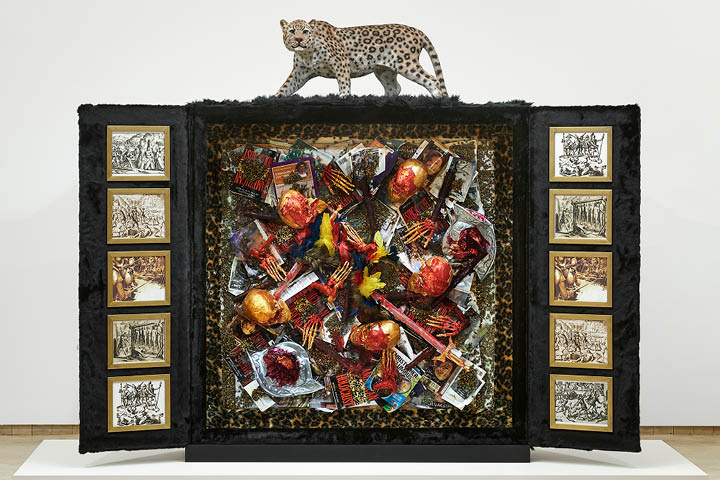
Raphael Montañez Ortiz started a new large-scale work, in a development of a series of assemblages in which he had been working for the past decade. In the spring of 2020, he began to relate the work, inspired by the genocide of indigenous peoples during the European invasion of the Americas, to the impact caused by Covid-19 among Latinx and BIPOC populations in the United States. Last summer, Montañez Ortiz decided to donate the work to El Museo del Barrio, the institution he founded in 1969. The condition he put in place was that the work should be presented in 2020, in order to ensure its resonance in the context of the global pandemic. The work was completed after several months gathering material purchased online, presented in a specially created display case. This structure echoes the shape of various exhibition apparatuses and their colonial genealogies — from the cabinet of curiosities to the diorama and the reliquary. Inside are presented pages of books, replicas of gold nuggets, bones, feathers, and weapons, all alluding to the invasion of the Americas. The orchestration of these objects articulates recurring interests in the artist’s practice since the 1960s, such as colonialism, destruction, authentication, magic, and animism. Described in the artist’s own words “a personal prophecy”, he relates the piece to recent events as well as to his own mortality: “I put myself into this piece.”
With its monumental title (The Memorial to the Sadistic Holocaust Destruction of Millions of Our Ancient Arawak-Taino-Latinx Ancestors Begun in 1492 by Columbus and His Mission to With the Conquistadores Colonize and Deliver to Spain the Wealth of the New World no Matter the Human Cost to the New World’s Less Than Human Aborigine Inhabitants…), the work is presented here together with another item from El Museo’s permanent collection, an English edition of the book by Fr. Bartolome de las Casas. Brevísima relación de la destrucción de las indias was first published in 1552 and is one of the earliest and most important historical accounts documenting the brutal treatment of indigenous cultures by the Spanish conquerors.
This presentation anticipates the retrospective that will celebrate Montañez Ortiz’s more than sixty-year career, scheduled for the end of 2021. With this major donation, the founder of the Museum creates a gesture that expands and deepens his legacy in the institution.
Taller Boricua: A Political Print Shop in New York
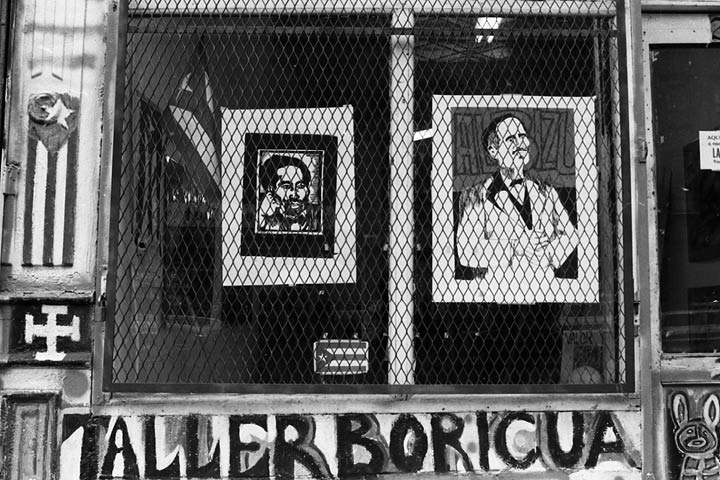
In celebration of Taller Boricua’s 50th anniversary, El Museo del Barrio presents Taller Boricua: A Political Print Shop in New York, the first monograph exhibition in three decades about the East Harlem-based Nuyorican collective workshop and alternative space. Best known for its cultural empowerment and political activism, the organization commonly known as ‘The Puerto Rican Workshop,” began as a printmaking studio, produced and circulated hundreds of prints by artists. The prints, produced mainly in the 1970s, centered on issues of Puerto Rican independence, workers’ rights, and anti-imperialism both locally and in the Caribbean and Latin America, issues that remain relevant today.
Curated by Rodrigo Moura, Chief Curator of El Museo del Barrio, the exhibition is comprised of more than 200 works and ephemera, including serigraphs, lithographs, linocuts, paintings, assemblages, collages, and drawings by founding and early members, including Marcos Dimas, Carlos Osorio (1927 – 1984), Jorge Soto Sánchez (1947 – 1987), Nitza Tufiño, and Rafael Tufiño (1922 – 2008), among several others. Works in the show draws from El Museo’s Permanent Collection, Taller’s extensive archives, as well as other collections.
A recognized space for political activism, Taller Boricua is one of several Puerto Rican organizations created in New York City around the same time, as the Young Lords and El Museo del Barrio, and has mentored several generations of artists, art historians, and curators. The space served as a focal point for the affirmation of identity as it relates to artistic production in the diaspora, as well as its connections with non-Western art history narratives. Focused on its first decade of existence, the exhibition also looks at the close relationship between Taller Boricua and El Museo del Barrio, examining their common members, ethos, and the artists’ role in the creation of a visual identity for the Museum’s programs and exhibitions in its early years.
Leadership support for this exhibition is provided by Tony Bechara. Generous funding is provided by The de la Cruz Martínez Family and Encarnita Valdes Quinlan and Robert C. Quinlan. Additional support is provided by Richard Torres.
Zilia Sánchez: Soy Isla (I Am an Island)
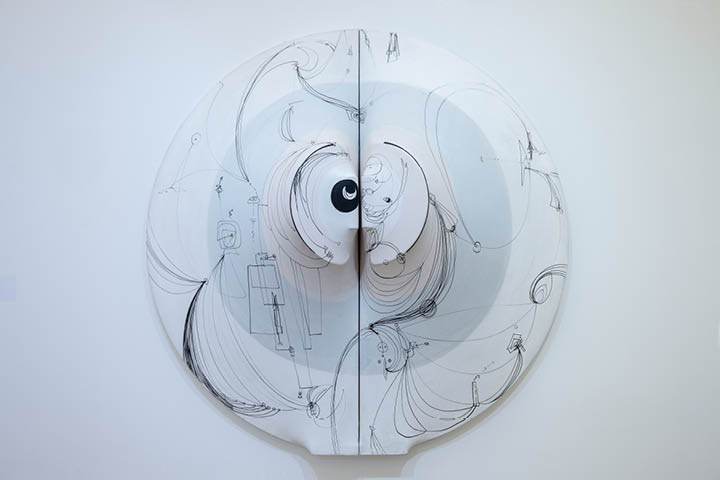
Zilia Sánchez: Soy Isla (I Am an Island) is the first museum retrospective of the prolific, innovative, and yet largely unknown artist Zilia Sánchez (b. 1926, Havana – lives and works in San Juan). The exhibition features over 40 works from the early 1950s to the present, including paintings, works on paper, shaped canvases, sculptural pieces, graphic illustrations, and ephemera. The retrospective traces Sánchez’s artistic journey from her early days in Cuba to her extended travels in Europe in the 1950s and residence in New York in the 1960s, and finally her move to Puerto Rico, where she has lived and worked since the early 1970s.
Learn more about Zilia’s artistic trajectory and full chronology >
Zilia Sánchez: Soy Isla is accompanied by a major publication and newly commissioned artist’s documentary about her life and practice.
Organized by The Phillips Collection, Washington, DC. Curated by Dr. Vesela Sretenović, Phillips Senior Curator of Modern and Contemporary Art.
The presentation of Zilia Sánchez: Soy Isla (I Am an Island) at El Museo del Barrio is supported by The Jacques & Natasha Gelman Foundation, series sponsor of El Museo del Barrio’s Women ’s Retrospective Series. With additional support from The Isabel and Agustín Coppel Collection, and Galerie Lelong & Co.
An Emphasis on Resistance: 2019 CIFO Grants & Commissions Program Exhibition
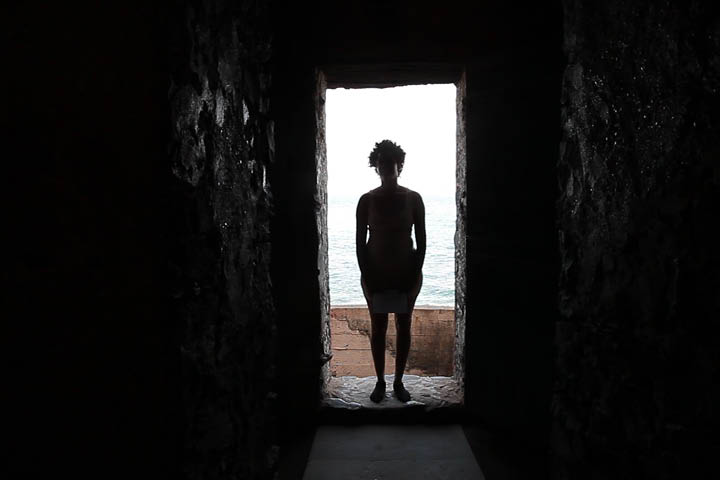
In partnership with CIFO, El Museo del Barrio will host newly commissioned works of awardees: Emerging Artists – Susana Pilar Delahante, María José Machado, Claudia Martínez Garay, and Oscar Abraham Pabón; Mid-Career Artists – Leyla Cárdenas, Ana Linnemann, Yucef Merhi, and Nicolas Paris; and Achievement Award recipient – Cecilia Vicuña. An important catalyst for the presentation of new works and a meaningful platform for advanced research on Latinx and Latin American art, this collaboration between CIFO and El Museo del Barrio aims to consider the act of resistance in both Latin America and in its diaspora.
The annual Grants & Commissions Program, now in its 17th iteration and CIFO’s signature initiative, is an embodiment of the foundation’s mission to foster, support, and exhibit innovative work by Latin American artists. Nominated by an esteemed group of curators, the awarded artists exemplify the breadth and depth of contemporary art production throughout Latin America, engaging with diverse contemporary themes across media including video, performance, multimedia installation, sculpture, and found material, among others.
Culture and the People: El Museo del Barrio, 1969-2019
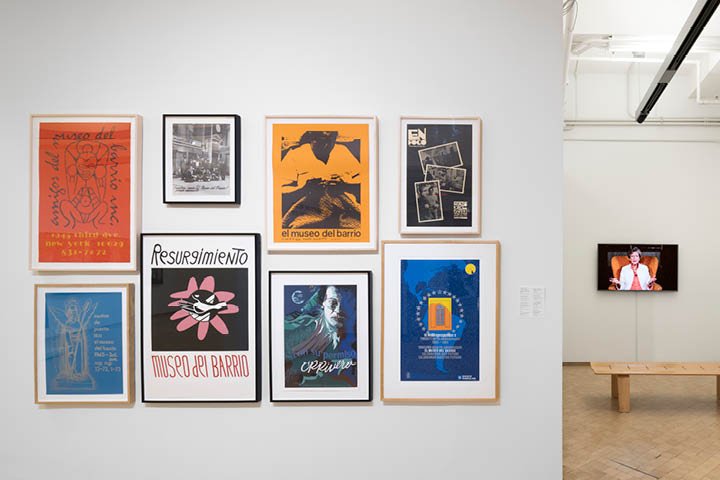
In celebration of its 50th anniversary, El Museo del Barrio presents Culture and the People: El Museo del Barrio, 1969-2019, a two-part exhibition featuring selections from the Permanent Collection and a timeline contextualizing the history of the institution with related archival materials. The exhibition will reflect on the institution’s activist origins and pioneering role as a cultural and educational organization dedicated to presenting and preserving Latinx and Latin American art and culture. The exhibition borrows its title from an essay penned by one of the Museum’s founders and its first director Raphael Montañez Ortíz, who outlined his concept for the institution in a 1971 article published in Art in America.
In addition to the two part-exhibition Culture and the People, El Museo will initiate a cycle of exhibitions dedicated to the Museum’s Permanent Collection in 2020. The cycle will focus on specific works from the collection, including room-size installations and in-depth bodies of work, enabling El Museo’s curators to work directly with artists, scholars, and conservators to uncover new research and grant further public access to the Museum’s Permanent Collection.
PART I | Selections from the Permanent Collection
Organized in thematic sections, Culture and the People features selections from the Permanent Collection that explores the legacy of El Museo del Barrio through the concepts of Roots, Resistance, and Resilience.
In Roots, artworks will be presented that address El Museo’s formation within the social and political context of 1969, and its relationship with the artists and local community of El Barrio (East Harlem). This section will also take a more expansive perspective to cultural roots, through works that reference colonial and indigenous ancestries.
In direct response to the Museum’s activist origins, the section devoted to Resistance includes artworks related to protest, gestures of solidarity, dictatorship, and exile. Created in homage to national heroes and fallen martyrs, as well as commemorating specific events, these pieces address historical political grievances and relate to contemporary events such as the ongoing border crisis.
The final section, Resilience, recognizes El Museo’s ongoing commitment to its mission. In this section, works related to the construction and expression of self- identity will be displayed, alongside images that reflect a sometimes subversive or humorous method of survival. This section will culminate with a presentation of artworks that speak to personal and collective resilience, as well as the continuation of cultural traditions.
Each section will feature artists of diverse cultural backgrounds and generations, and will range from indigenous art and artifacts to contemporary paintings and installation art. A number of the pieces on view will relate to multiple sections, inviting audiences to recognize echoes and dialogues between the pieces on display. The exhibition will feature new acquisitions as well as artworks that have never been publicly presented, in addition to artworks familiar to El Museo audiences.
Featured Artists
ADÁL, Ignacio Aguirre, ASCO, Myrna Báez, Diógenes Ballester, Tony Bechara, Charles Biasiny-Rivera, Tania Bruguera, Ramón Cabán, Roger Cabán, Rodríguez Calero, Luis Camnitzer, Martín Chambi, Papo Colo, Luis Cruz Azaceta, Felipe Dante, Margarita Deida and Piedro Pietri, Ana de la Cueva, Milagros de la Torre, Perla de León, Bartolomé de las Casas, Marcos Dimas, Nicolás Dumit- Estévez, León Ferrari, Antonio Frasconi, Coco Fusco, Carlos Garaicoa, Domingo García, iliana emilia garcía, Arturo García Bustos, Flor Garduño, Guillermo Gómez-Peña, Félix González-Torres, Muriel Hasbún, Pablo Helguera, Ester Hernández, Gilberto Hernández, Carmen Herrera, Lorenzo Homar, Graciela Iturbide, Alfredo Jaar, Ivelisse Jiménez, Charles Juhász-Alvarado, Shaun “El. C.” Leonardo, Richard A. Lou, Miguel Luciano, Antonio Maldonado, Carlos Marichal, Hiram Maristany, Antonio Martorell, Leopoldo Méndez, Héctor Méndez Caratini, Raphael Montañez Ortíz, Francisco Mora, Arnaldo Morales, José Morales, Rachelle Mozman, Isidoro Ocampo, Francisco Manuel Oller y Cestero, Pepón Osorio, Manuel “Neco” Otero, César Paternosto, Dulce Pinzón, Miguel Rio Branco, Rubén Rivera Aponte, Rafael Rivera-Rosa, Arnaldo Roche-Rabell, Félix Rodríguez Báez, Freddy Rodríguez, José A. Rosa Castellanos, Lotty Rosenfeld, Edgar Ruiz Zapata, Fernando Salicrup, Juan Sánchez, Jorge Soto Sánchez, Taíno Culture, Taller de Gráfica Popular, Rigoberto Torres, Rubén Torres-Llorca, Nitza Tufiño, Rafael Tufiño, Patssi Valdez, Vargas-Suárez Universal, Mariana Yampolsky, the Young Lords Party, and Alfredo Zalce.
PART II | An Institutional Timeline
Complementing the Permanent Collection, El Museo del Barrio presents a second display tracing the historical and cultural trajectory of the institution since 1969. Expanding on previous research about El Museo’s institutional past, the presentation reveals different moments in the Museum’s history as it relates to its leadership and staff, its various locations, and key exhibitions and programs throughout its first five decades. Archival documentation including photographs, posters, invitations, exhibition catalogues, and other ephemera will supplement a detailed timeline to further illustrate and contextualize critical moments in the museum’s history.
Lucio Fontana: Spatial Environment (1968)
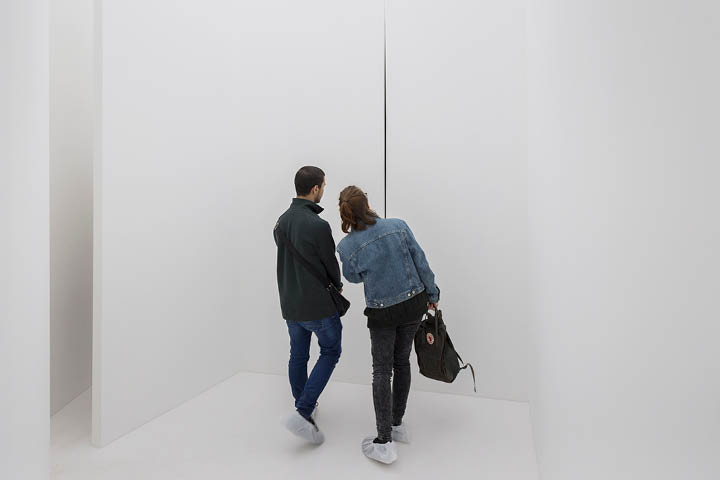
El Museo del Barrio is pleased to present artist Lucio Fontana’s 1968 Spatial Environment [Ambiente Spaziale]. Conceived in relation to the artist’s innovative Spatialism movement, starting from 1949, Fontana’s Spatial Environments are immersive environments that viewers enter and navigate. Reconstructed with the authorization of the Fondazione Lucio Fontana, the all-white, labyrinthine Spatial Environment (1968) at El Museo will follow the exact specifications of the artist’s final work in the series, originally conceived and presented at documenta 4 in Kassel, Germany shortly before Fontana’s death.
The installation coincides with the exhibition at The Met Breuer Lucio Fontana: On the Threshold (on view January 23 through April 14, 2019), curated by Iria Candela, Estrellita B. Brodsky Curator of Latin American Art in The Met’s Department of Modern and Contemporary Art.
The presentation of Lucio Fontana: Spatial Environment (1968) at El Museo del Barrio is made possible with support from Angela Westwater.
BEFORE YOUR VISIT
We invite you to enter and walk inside Spatial Environment (1968). Please read carefully and follow the guidelines below to help preserve the integrity of the installation:
• Do not touch the walls or sculptural elements.
• A maximum of two people are allowed inside at a time.
• Shoes are not allowed inside the installation.
• Please wear socks or use the disposable shoe guards available. High heels are not allowed.
• Please listen to the directions of museum guards.
• Children must be accompanied by an adult.
Anyone who wishes to access the works at all times does so at their own risk and responsibility. El Museo del Barrio shall therefore be held free of any liability and/or harm to visitors and their belongings.
Please be aware, entrance into the installation is not advisable for anyone uncomfortable in closed spaces; those who suffer from claustrophobia, panic attacks, or are susceptible to disorientation; or those with alternate physical mobility.
ABOUT LUCIO FONTANA
Argentine born Lucio Fontana (b. 1899 – d. 1968) is recognized for his explorations of energy and dimensionality, as reflected in his characteristic approach of punching holes and cutting tears into the surfaces of his paintings, sculptures, and installations. The child of Italian parents, Fontana was born in Rosario, Argentina, and moved back and forth between Italy and Argentina throughout his life. After beginning his career as a figurative sculptor in Rosario, the artist briefly studied at the Accademia di Belle Arti di Brera before returning to Argentina on the cusp of WWII. There, with Jorge Romero Brest and Jorge Larco, he founded the Altamira art school in Buenos Aires, and with his students published the 1946 Manifiesto Blanco. This document forms the incipient manifestation of Fontana’s theory of Spatialism, which he would continue to develop upon his definitive return to Italy in 1947. A well-recognized artistic figure within his lifetime, Fontana exhibited his work at the Venice Biennale and Documenta 4. His art is included in major collections throughout the globe.
Liliana Porter: Other Situations
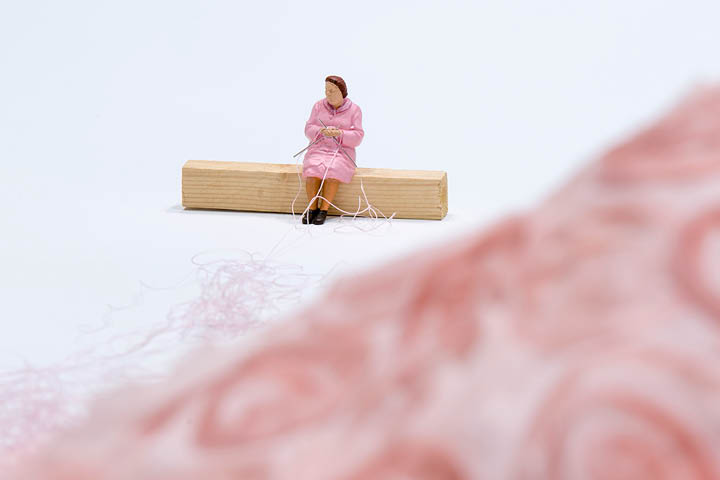
Other Situations is a non-linear survey of Porter’s work from 1973 to 2018, which explores the conflicting boundaries between reality and fiction, and the ways in which images are circulated and consumed. Organized by SCAD Museum of Art and curated by Humberto Moro, SCAD Curator of Exhibitions, this is the artist’s first museum solo show in New York City in more than 25 years. The exhibition highlights the fundamental distinction that Porter creates between the notions of “narrative” and “situation” in contrast to the structures implicit in most stories that suggest a relationship with time, and in which the artist is not interested. In her work, the past and future of an action becomes irrelevant in light of the urgency and absurdity of the problems faced by the figures portrayed. Sometimes paired in conversation or arranged in larger groups, Porter’s characters — a pantheon of cultural figures such as Elvis Presley, Che Guevara, Jesus, Mickey Mouse and Benito Juárez — evokes questions about representation, image dissemination and public life, and are particularly relevant in present times, when the fields of politics, spectacle and celebrity culture collide and merge. Among the significant pieces included in the exhibition are Porter’s 1970s photographs alluding to space and the body, and more recent works like the “Forced Labor” series, in which the artist utilizes miniature figurines to make a statement about reality, labor and self-awareness.
Along with the exhibition, this fall, Porter will present a new theater performance, a medium that she has explored in recent years in close collaboration with artist Ana Tiscornia. Specially commissioned for the occasion, the performance will be presented at the renowned performance art space, The Kitchen. In addition, El Museo del Barrio will produce a publication focusing on artist Liliana Porter’s theatrical output – the first of its kind– in an effort to further disseminate the artist’s work and legacy.
ABOUT LILIANA PORTER
Born in Argentina in 1941, Liliana Porter, originally educated in printmaking — a discipline that deeply influenced her practice — moved to New York in 1964, where she cofounded the New York Graphic Workshop with artists Luis Camnitzer and José Guillermo Castillo. Since then, Porter has worked in a variety of media including painting, drawing, printmaking, photography, assemblages, video, installation and, more recently, theater. Porter’s art has been exhibited in more than 35 countries in over 450 group shows, and is a part of public and private collections including El Museo del Barrio. Her work has been reviewed in Artforum, Art in America, and Sculpture Magazine, among other publications. In 2013, the Fundación Patricia Phelps de Cisneros published the book Liliana Porter in Conversation with Inés Katzenstein as part of the Conversaciones/Conversations series. Galleries in Europe, Latin America and the United States represent the artist.
Liliana Porter: Other Situations is made possible through major support from the Jacques & Natasha Gelman Foundation, series sponsor of El Museo del Barrio’s Women ’s Retrospective Series. Additional support is provided by Estrellita and Daniel Brodsky, and Patricia Marshall.
Down These Mean Streets: Community and Place in Urban Photography
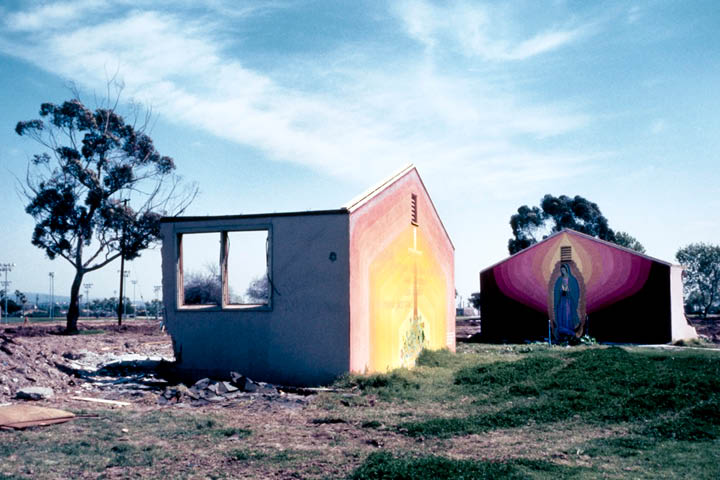
The American city underwent unprecedented transformations after World War II. As middle-class populations shifted to the suburbs and new highways cut through thriving neighborhoods, many cities began to experience economic and social disintegration, especially in Black, Latino, and working class communities. Down These Mean Streets: Community and Place in Urban Photography unites the work of ten artists who critically reflect on the state of urban America primarily between the 1960s and early 1980s, when government initiatives that sought to address the needs of cities in crisis sparked public debate. The title is drawn from Piri Thomas’s classic 1967 memoir, Down These Mean Streets. Like Thomas, their work challenges perceptions of embattled cities and explores the human narratives that unfolded in communities across the United States.
This exhibition examines how Latino photographers, many of whom came of age in urban neighborhoods, frame their environment. They approach the street not as detached observers but as engaged participants by turning to portraiture, urbanscapes, serial photography, or unconventional manipulations of the photographic image. Many contribute to a long tradition of socially driven documentary photography. Others embrace conceptual strategies or use color photography to capture a less romantic image of the American city. Their work reexamines neighborhoods often viewed as places of social decline and affirms the strength of community in urban America.
Organized by E. Carmen Ramos, SAAM’s deputy chief curator and curator of Latino art, the exhibition explores the work of ten photographers. To read artist bios, click here.
Rather than approach the neighborhoods as detached observers, these artists deeply identified with their subject. Activist and documentary photographer Frank Espada captured humanizing portraits of urban residents in their decaying surroundings. Hiram Maristany and Winston Vargas lovingly captured street life in historic Latino neighborhoods in New York City, offering rare glimpses of bustling community life that unfolded alongside urban neglect and community activism. Working in Los Angeles, Oscar Castillo captured both the detritus of urban renewal projects and the cultural efforts of residents to shape their own neighborhoods. Perla de Leon’s poignant photographs of the South Bronx in New York—one of the most iconic blighted neighborhoods in American history—place into sharp relief the physical devastation of the neighborhood and the lives of the people who called it home.
John Valadez’s vivid portraits of stylish young people in East Los Angeles counter the idea of inner cities as places of crime. Camilo José Vergara and Anthony Hernandez adopt a cooler, conceptual approach in their serial projects, which return to specific urban sites over and over, inviting viewers to consider the passage of time in neighborhoods transformed by the urban crisis. The barren “concrete” landscapes of Ruben Ochoa and Manuel Acevedo pivot on unconventional artistic strategies such as the merging photography and drawing, to inspire a second look at the physical features of public space that shape the lives of urban dwellers.
QUEENIE: Selected artworks by female artists from El Museo del Barrio’s Collection
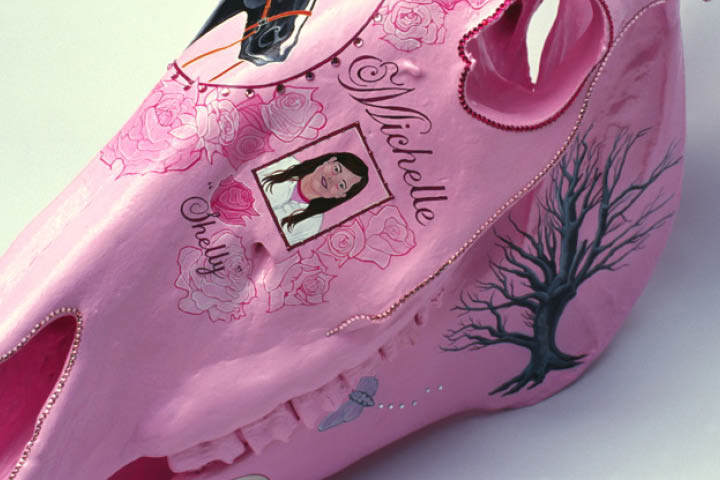
Hunter East Harlem Gallery (HEHG) at Hunter College and El Museo del Barrio are pleased to present the exhibition QUEENIE: Selected artworks by female artists from El Museo del Barrio’s Collection. The group exhibition features a selection of works from the East Harlem-based museum’s Permanent Collection that prompt a multifarious dialogue not only around society and gender but simultaneously refutes a homogenized view of Latinx art. With a particular focus on female artists from the Caribbean, Latin America, and the larger Latinx diaspora, QUEENIE explores the roles women have played in El Museo del Barrio’s history and its impact on the local East Harlem community.
Including works by Tania Bruguera, Margarita Cabrera, Maria Fernanda Cardoso, Melba Carillo, Marta Chilindron, Alessandra Expósito, Iliana Emilia Garcia, Dulce Gomez, Cristina Hernández Botero, Carmen Herrera, Jessica Kairé, Carmen Lomas Garza, Evelyn López de Guzmán, Anna Maria Maiolino, Ana Mendieta, Marina Núñez del Prado, Liliana Porter, Raquel Rabinovich, Scherezade, Nitza Tufiño, among others.
QUEENIE takes its title from a sculpture by Alessandra Expósito, a painted horse skull that illustrates an imagined story of a young girl and her pet horse. As part of the exhibition, HEHG has invited three NYC-based artists: Melissa Calderón, Alessandra Expósito, and Glendalys Medina to respond to the exhibition with a commissioned artwork that further explores the connections among the collecting process, societal change, and gendered experience.
QUEENIE is organized by Arden Sherman, Curator, Hunter East Harlem Gallery; Noel Valentin, Permanent Collection Manager, El Museo del Barrio; Elizaveta Shneyderman, Gallery Manager, Hunter East Harlem Gallery; and Olivia Gauthier, Gund Curatorial Fellow, Hunter College.
REVIVAL: Contemporary Pattern & Decoration
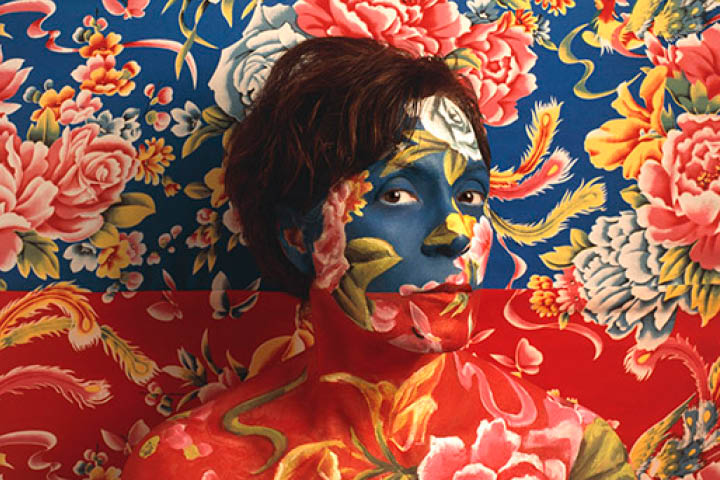
El Museo del Barrio, the Hostos Center for the Arts & Culture and the Bronx Council on the Arts present their first-ever joint exhibition titled REVIVAL: Contemporary Pattern and Decoration at the Longwood Art Gallery @ Hostos in the Bronx. Guest curated by Rocío Aranda-Alvarado, and a part of Hostos Community College’s 50th anniversary celebration, the group exhibition explores a renewed interest in pattern and decoration by contemporary artists in various media featuring works by 26 artists. Such interest builds upon a movement that developed in the 1970s, when artists began to explore the possibilities of pattern and focused on the repetition of color, line, and shape. The movement became known as “Pattern and Decoration,” or more generally “P & D.” In part, this was a response to the severity of the Minimalist movement that was dominated by large-scale works by male artists.
REVIVAL: Contemporary Pattern and Decoration reflects contemporary concerns of living artists who evoke both pattern and the body as forms of symbolic and visual language. The body acts not only as a bearer of crucial social information, but also as a reminder of its historic role in all kinds of patterns and other image-making, such as wallpaper, fabric design, porcelain objects, and silhouette portrait painting. Today, artists evoke the bodies linked to internet searches, glossy magazine images, historic works of art, and other cultural monuments. Geometric lines evoke the historical significance of abstraction and the endless possibilities of line and form in pattern to evoke a variety of ideas, physical reactions, and subsequent responses. Taken together, the artists presented here explore a broad range of aesthetic approaches to both the body and pattern as interconnected and meaningful elements of artistic production.
PARTICIPATING ARTISTS
Damali Abrams | Firelei Báez | Leonardo Benzant | Lionel Cruet | Abelardo Cruz Santiago | ray ferreira | Marlon Griffith | Alejandro Guzman | Lee Jacob Hilado | Deborah Jack | Remy Jungerman | Jessica Lagunas | Troy Michie | Joiri Minaya | Pierre Obando | Wilfredo Ortega | Cecilia Paredes | Antonio Pulgarín | Freddy Rodríguez | Sheena Rose | Keisha Scarville | Mickalene Thomas | Margaret Rose Vendryes | Marcus Zilliox